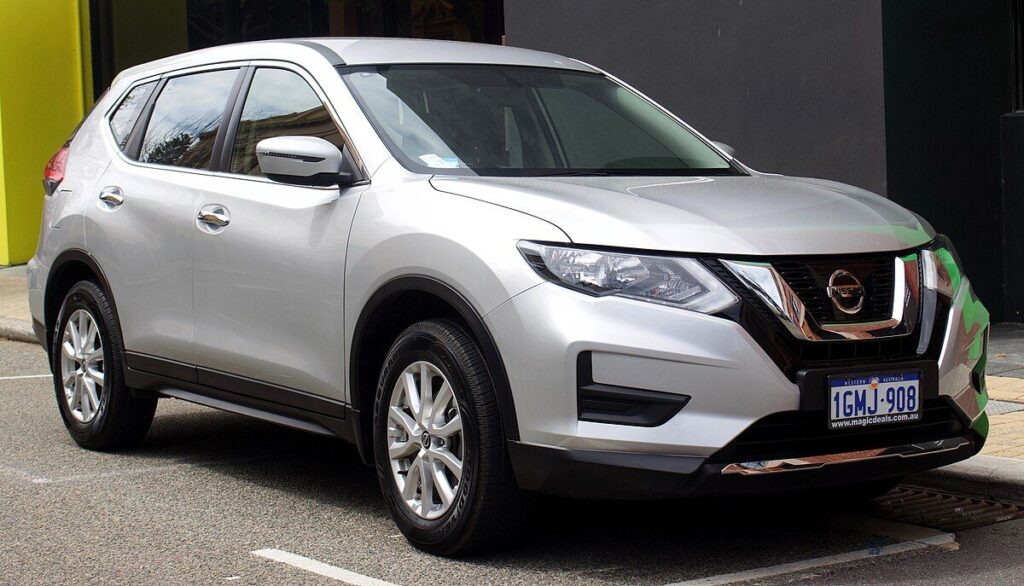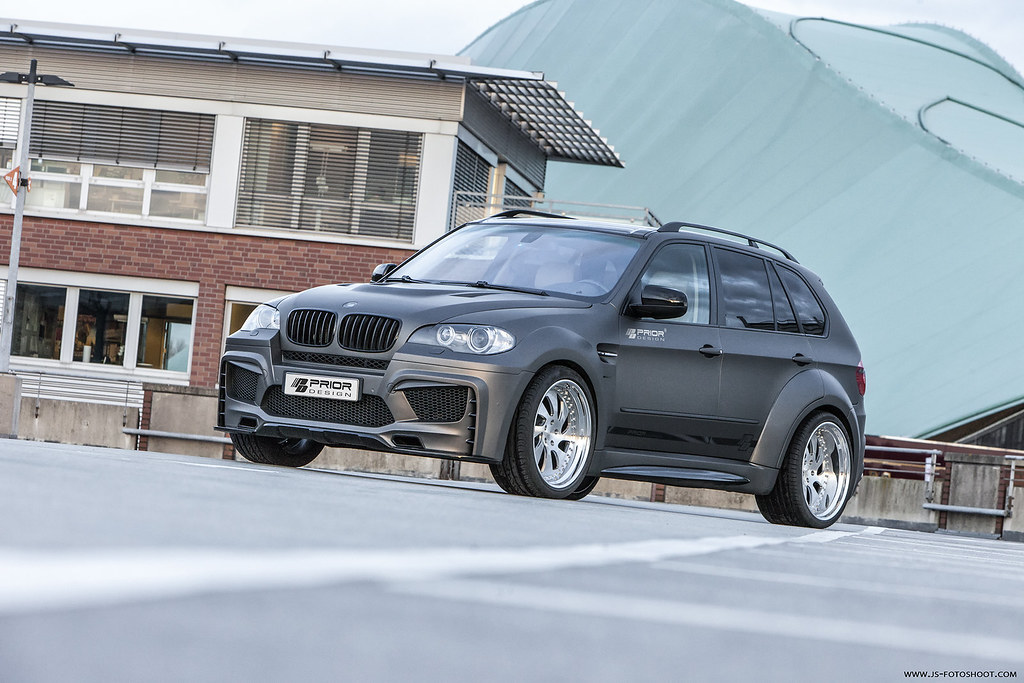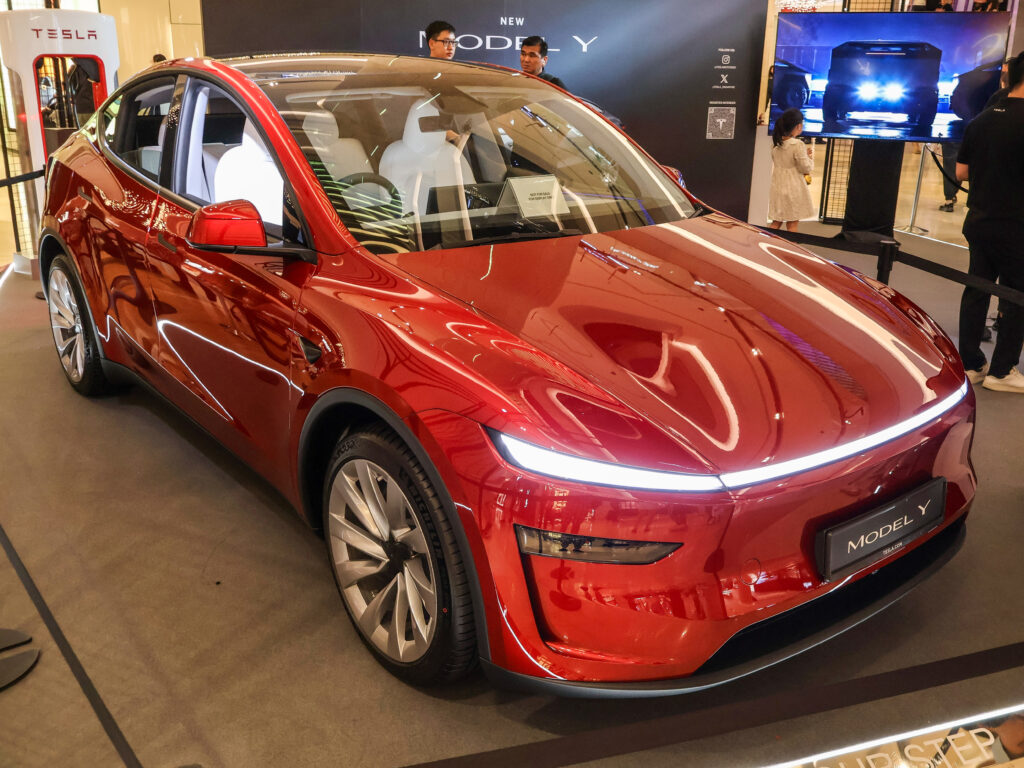
Let’s face it. Sometimes, our cars let us down. This sentiment resonates deeply with countless vehicle owners who have experienced the sting of buyer’s remorse. In today’s automotive landscape, where both new and used cars command significant prices, making an informed purchasing decision is more critical than ever. The allure of sleek aesthetics or impressive specifications can often mask underlying issues that only become apparent after the keys are in your hand and the loan agreement is signed.
The financial commitment associated with a vehicle purchase, often stretching into tens of thousands of dollars or multi-year loans, makes regret a particularly bitter pill to swallow. Yet, “it happens all too often,” as many discover that their promising new ride simply doesn’t live up to the hype. Learning from the collective experiences – and missteps – of other vehicle owners offers an invaluable pathway to making smarter choices, preventing potential headaches and unexpected financial burdens down the line.
Indeed, a recent LendingTree survey sheds light on the widespread nature of this phenomenon, revealing that “Nearly 4 in 10 who bought a car in the past year have regrets.” Strikingly, the “leading cause of regret is not the payment or the color of the vehicle, but its make and model.” This underscores the importance of thorough research, looking beyond initial impressions to understand the long-term ownership experience. With that in mind, we delve into 12 specific vehicles that, according to owner feedback, frequently lead to a profound sense of “unopting” if given a second chance.
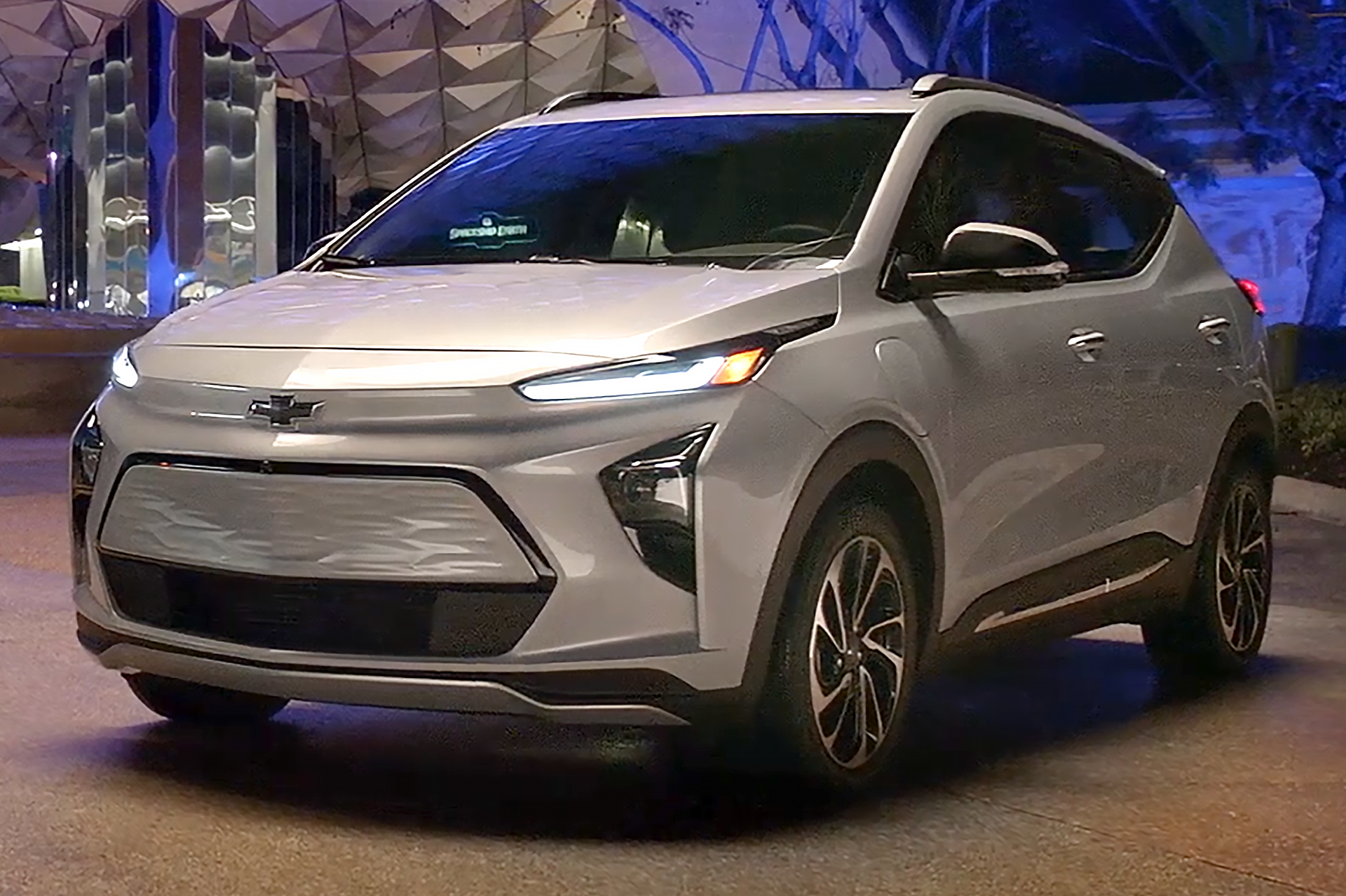
1. **Chevrolet Bolt**The Chevrolet Bolt, General Motors’ electric vehicle offering, initially garnered praise for its attractive blend of affordability and a respectable range. For many consumers eager to enter the EV market without breaking the bank, the Bolt seemed like a compelling choice. However, as numerous owners have discovered, initial appeal often gives way to a litany of frustrations that have significantly tarnished its reputation and led to considerable buyer’s remorse.
Perhaps the most infamous and concerning issue to plague the Bolt is its propensity for battery-related fires. This serious safety defect triggered “big recalls in 2020 and 2021,” sending shockwaves through the electric vehicle community. The root cause was identified as faulty lithium-ion batteries manufactured by LG, which possessed the potential to “short-circuit, overheat, and ignite into flames,” presenting a severe hazard to owners and their property.
Beyond the critical battery problems, the Bolt’s overall driving and passenger experience also leaves much to be desired for many. Owners frequently point to a “so-so” ride quality, which fails to provide the comfort and refinement expected from a modern vehicle. Furthermore, the available “space for rear passengers” is often deemed inadequate, making it less than ideal for families or those frequently transporting multiple occupants.
Compounding these issues, the vehicle’s “handling” characteristics are also described as merely “so-so,” indicating a lack of engaging dynamics or precise control that might otherwise offset some of its other drawbacks. While its electric powertrain promised a step forward, the accumulation of these reliability and comfort concerns has firmly placed the Chevrolet Bolt on the list of vehicles many owners would rethink if given the opportunity.
The pervasive nature of these problems, especially the safety-critical battery recalls, highlights the importance of scrutinizing long-term reliability and manufacturer responses to known issues before committing to a purchase. For a vehicle that was meant to be a beacon of accessible EV technology, its journey has unfortunately been marked by significant disappointment for a substantial number of its owners.
Car Model Information: 2022 Chevrolet Bolt EUV FWD LT
Name: Chevrolet Bolt EV
Caption: 2022 Chevrolet Bolt EV
Manufacturer: General Motors
Production: unbulleted list
ModelYears: unbulleted list
Class: Subcompact car
BodyStyle: hatchback
Layout: Front-engine, front-wheel-drive layout
Predecessor: Chevrolet Spark EV
Categories: 2020s cars, All Wikipedia articles in need of updating, All articles containing potentially dated statements, All articles with unsourced statements, Articles containing potentially dated statements from February 2018
Summary: The Chevrolet Bolt EV (marketed in Europe as Opel Ampera-e) is a battery electric subcompact hatchback manufactured and marketed by General Motors under its Chevrolet brand from late 2016 until late 2023, with a brief hiatus between mid-2021 and early 2022.
The first-generation Bolt was developed and manufactured with LG Corporation. Sales of the 2017 Bolt began in California in December 2016; it was released nationwide and international markets release in 2017. A rebadged European variant was marketed as the Opel Ampera-e in mainland Europe. In 2017, the Bolt was the second-best-selling plug-in car in the United States. It was named the 2017 Motor Trend Car of the Year, the 2017 North American Car of the Year, an Automobile magazine 2017 All Star, and was listed in Time magazine’s Best 25 Inventions of 2016. The Ampera-e was discontinued after 2018. By the end of 2020, GM had sold 112,000 Bolt and Ampera-e cars worldwide. The first-generation Bolt had been subject to at least three recalls due to battery fire risks.
In mid-2023, GM officials said they would discontinue the Bolt; after outcry, they announced plans for a next-generation model, which is expected to be revealed in 2025 for model year 2026.
Get more information about: Chevrolet Bolt
Buying a high-performing used car >>>
Brand: Chevrolet Model: Bolt
Price: $23,294 Mileage: 30,332 mi.
Read more about: From Humble Beginnings to Electric Dreams: A Deep Dive into Elon Musk’s Electrifying and Eclectic Garage
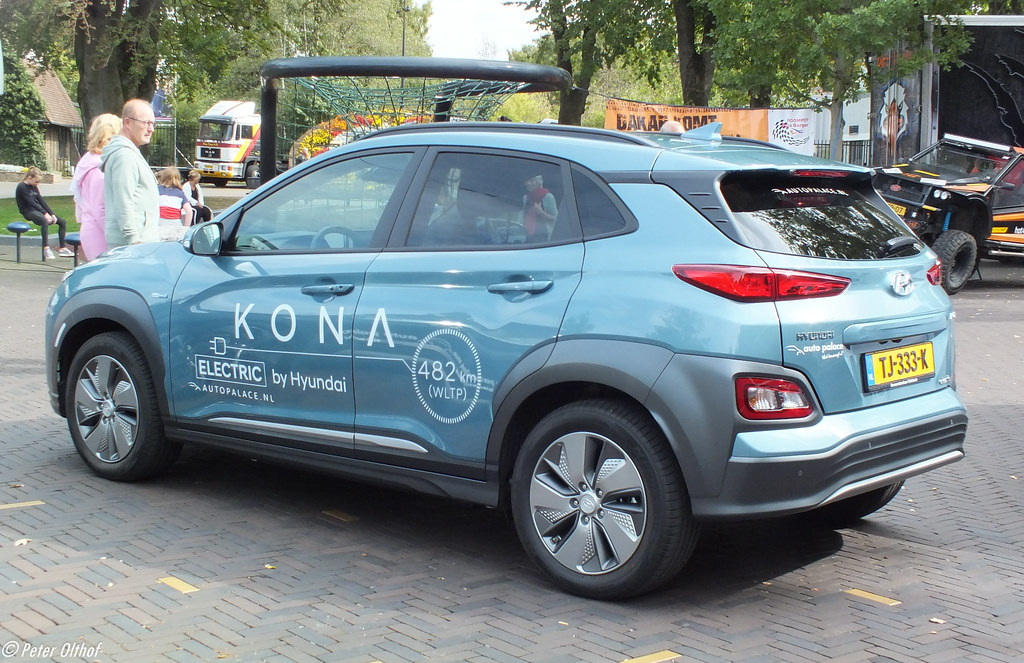
2. **Hyundai Kona Electric**Hyundai has carved out a strong reputation in the electric vehicle segment with several innovative and well-received models, yet even a successful brand can have its missteps. The Hyundai Kona Electric, unfortunately, stands out as one of those “clunkers” in the company’s otherwise impressive EV lineup. Similar to the Chevrolet Bolt, this compact electric SUV found itself embroiled in significant controversy surrounding its battery system, casting a long shadow over its ownership experience.
A troubling history of “battery fires and recalls” defines a significant portion of the Kona Electric’s early years. Hyundai responded to these grave safety concerns by issuing “a worldwide recall in 2020 and 2021” with the explicit aim “to nip the fire risks in the bud by replacing battery packs in affected EVs.” This large-scale remedial action, while necessary for safety, underscored a fundamental flaw in a key component of the vehicle’s powertrain.
However, the battery issues, as the context warns, were “just the tip of the iceberg” for many owners. This ominous phrase suggests a deeper well of problems that extend beyond the initial fire hazards, contributing to a broader sense of dissatisfaction. When a vehicle’s primary power source proves problematic, it can erode trust and create ongoing anxiety for drivers.
For prospective buyers, the Kona Electric serves as a potent reminder that a vehicle’s reputation can be severely impacted by critical component failures. Even with recalls issued, the memory and potential lingering effects of such significant problems can make it difficult for owners to feel fully confident in their purchase. This model demonstrates how even a brand known for innovation can stumble, leading to considerable regret among those who had hoped for a seamless entry into electric driving.
The cautionary tale of the Hyundai Kona Electric is clear: “Buyer beware!” It emphasizes the need for diligent research into a vehicle’s recall history and common complaints, particularly for emerging technologies like electric powertrains. For many who took the plunge, the experience was far from the smooth, eco-friendly ride they envisioned, making it a prime candidate for a do-over.
Car Model Information: 2023 Buick Envision Preferred
Name: Hyundai Kona
Caption: Hyundai Kona N Line (SX2)
Manufacturer: Hyundai Motor Company
Aka: Hyundai Kauai (Portugal)
Production: 2017–present
ModelYears: 2018–present
Class: Subcompact crossover SUV
BodyStyle: SUV
Layout: ubl
Categories: 2020s cars, All-wheel-drive vehicles, All Wikipedia articles in need of updating, Articles containing Chinese-language text, Articles containing Korean-language text
Summary: The Hyundai Kona (Korean: 현대 코나) is a subcompact crossover SUV produced by the South Korean manufacturer Hyundai. The first-generation Kona debuted in June 2017 and the production version was revealed later that year. It is positioned between the Venue or Bayon and the Tucson in Hyundai crossover SUV line-up. The battery electric version called the Kona Electric (or Kona EV) was first launched in South Korea during the first half of 2018 and rolled out gradually worldwide afterwards.
Get more information about: Hyundai Kona
Buying a high-performing used car >>>
Brand: Hyundai Model: Kona Electric
Price: $20,221 Mileage: 46,554 mi.
Read more about: Buyer’s Remorse on Wheels: 9 Vehicles Owners Wish They Never Drove Off the Lot
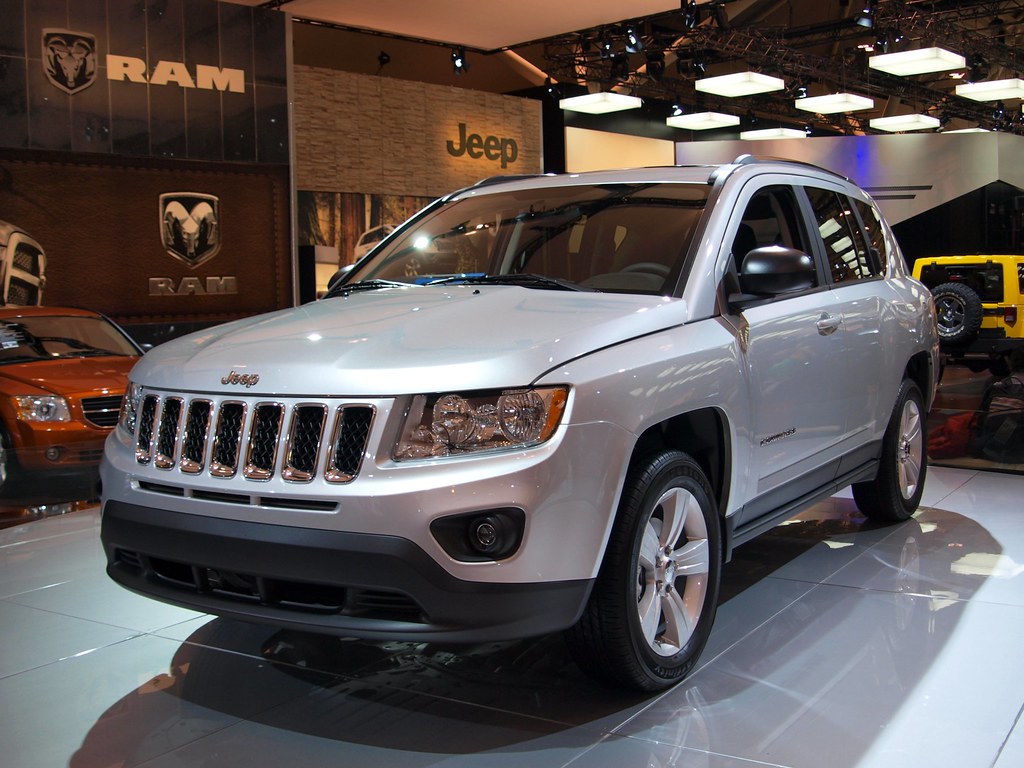
3. **Jeep Compass**The Jeep Compass, a compact SUV, might seem like an appealing option for those seeking the rugged image of the Jeep brand in a smaller package. However, numerous owners have reported a slew of “serious issues over various model years,” transforming what should be an enjoyable ride into what many would describe as “a migraine headache on wheels.” For anyone considering this SUV, the collective wisdom of current and former owners strongly advises caution.
A prevalent point of contention among owners is the vehicle’s transmission system. Both the “continuously variable transmission (CVT) and 9-speed automatic transmissions” have been implicated in significant reliability problems. Drivers frequently experience “herky-jerky shifting” and, more alarmingly, the potential for “catastrophic failure,” which can be an incredibly costly and inconvenient repair for any car owner. Such transmission woes undermine confidence and the daily driving experience.
Beyond the critical transmission complaints, the Compass also struggles with other fundamental mechanical aspects. “Poor engine performance” is another common grievance, suggesting that the vehicle often lacks the power and responsiveness expected for its class. This can translate to frustrating driving dynamics, especially in situations requiring acceleration or sustained speed.
Adding to the list of mechanical headaches are reports of “excessive oil consumption,” which can lead to frequent top-offs and concerns about long-term engine health, potentially signaling underlying issues that could escalate into more serious problems. Furthermore, “electrical system issues” are also cited, introducing a whole host of unpredictable malfunctions that can affect everything from infotainment to critical safety features.
The accumulation of these diverse and significant problems – from transmission failures to engine and electrical glitches – paints a clear picture of why the Jeep Compass frequently appears on lists of regrettable purchases. Its blend of reliability concerns and substantial repair costs often leaves owners feeling deeply dissatisfied, far from the adventurous spirit the Jeep brand aims to embody. For many, choosing this model was a journey marked by frustration rather than freedom.
Car Model Information: 2017 Jeep Wrangler Unlimited Sport
Name: Jeep Compass
Caption: 2019 Jeep Compass
Manufacturer: Jeep
Production: 2006–present
ModelYears: 2007–present
Class: Compact crossover SUV
BodyStyle: SUV
Layout: Front-engine, front-wheel-drive layout
Chassis: Unibody
Categories: 2010s cars, 2020s cars, All-wheel-drive vehicles, All Wikipedia articles written in American English, Articles with short description
Summary: The Jeep Compass is a compact crossover SUV, introduced in 2006 for the 2007 model year. The first generation Compass and Patriot, its rebadged variant, were among Jeep’s first crossover SUVs. The second-generation Compass debuted in September 2016 in Brazil and at the Los Angeles International Auto Show in November 2016, sharing a modified platform with the Renegade. It is positioned between the smaller Renegade and the larger Cherokee globally or the Commander in South America. The third-generation Compass debuted in May 2025, built on the STLA Medium by Stellantis, shared with other PSA Groupe vehicles.
Get more information about: Jeep Compass
Buying a high-performing used car >>>
Brand: Jeep Model: Compass
Price: $20,725 Mileage: 111,103 mi.
Read more about: Buyer’s Remorse on Wheels: 9 Vehicles Owners Wish They Never Drove Off the Lot
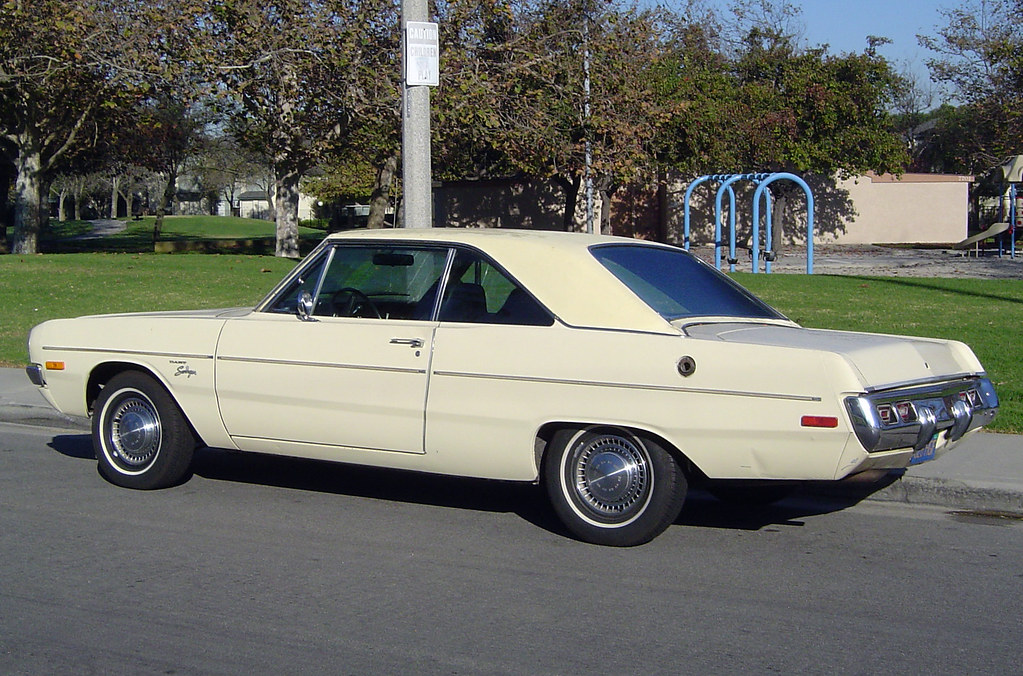
4. **Dodge Dart**The Dodge Dart, a compact sedan, was introduced with the promise of delivering a practical and stylish option for everyday drivers. However, its reality for many owners quickly devolved into what can only be described as having “full-size car problems” squeezed into a smaller frame. Across various critical components, the Dart proved to be a source of persistent frustration, leading a significant number of buyers to wish they had never opted for it.
The litany of complaints about the Dodge Dart is extensive, touching upon nearly every major system of the vehicle. Owners have reported widespread issues “from the transmission to the engine and from the suspension to the brakes.” This broad spectrum of problems suggests a fundamental lack of reliability and quality control across its engineering, making it a truly challenging vehicle to own in the long run.
The depth of owner dissatisfaction is starkly illustrated by consumer surveys. According to insights from Consumer Reports, “around six in 10 buyers say they are not satisfied with the vehicle.” This statistic is a powerful indicator of widespread regret, signifying that a majority of those who purchased the Dart found their ownership experience to be far from positive, undermining trust in its capabilities and durability.
Such a high percentage of dissatisfaction points to more than just minor inconveniences; it reflects a systemic failure to meet basic owner expectations for reliability and performance. When core components like the engine and transmission are frequently problematic, the vehicle becomes less a means of transport and more a source of ongoing worry and expense.
For potential car buyers, the Dodge Dart serves as a strong cautionary tale, emphasizing the critical importance of researching long-term owner satisfaction ratings and common complaints before making a commitment. It illustrates how a vehicle can appear appealing on the surface but ultimately fail to deliver a dependable and enjoyable ownership experience, leading to considerable financial and emotional regret.
Car Model Information: 1972 Dodge Dart Swinger
Name: Dodge Dart
Caption: 1966 Dodge Dart GT 2-door hardtop
Manufacturer: Dodge
Production: 1959–1976 (US market)
ModelYears: 1960–1976 (US market)
Class: Full-size
Layout: FR layout
Predecessor: Dodge Coronet#Fourth generation (1957–1959)
Related: Plymouth Valiant,Chrysler Valiant,Dodge Phoenix
Successor: Dodge Aspen,Dodge Diplomat,Talbot Tagora
Categories: 1970s cars, All articles with unsourced statements, Articles with short description, Articles with unsourced statements from December 2023, Articles with unsourced statements from May 2025
Summary: The Dodge Dart is a line of passenger cars produced by Dodge from the 1959 to 1976 model years in North America, with production extended to later years in various other markets.
The production Dodge Dart was introduced as a lower-priced full-size model in 1960 and 1961, but became a mid-size car for one model year for 1962, and was then reduced to a compact for two generations, from 1963 to 1976.
Chrysler had first used ‘Dart’ name plates on two Italian styled show cars, in 1956 and 1957, before it became a Dodge model name. The Dart nameplate was resurrected for a Fiat-derived compact car that was introduced in 2012.
Get more information about: Dodge Dart
Buying a high-performing used car >>>
Brand: Dodge Model: Dart
Price: $18,250 Mileage: 40,424 mi.
Read more about: 14 Classic Rides That Boomers Loved But Millennials and Gen Z Just Can’t Stand: Unpacking Why These Iconic Cars Fail to Appeal Now

5. **Dodge Grand Caravan**For decades, the Dodge Grand Caravan held a significant place in the American family vehicle market, creating “memories — some fond and some not” for countless families on their travels. While its utility as a “family, pet, and thing hauler” was undeniable, the actual driving and ownership experience for many has been anything but smooth, primarily due to chronic mechanical issues that consistently lead to owner regret.
The most frequent and debilitating complaint leveled against the Dodge Grand Caravan centers on “transmission failure.” This is not a minor inconvenience but a critical breakdown that can render the vehicle inoperable and incur substantial repair costs. Before reaching the point of complete failure, owners often report a progression of troubling symptoms, including “delayed gear engagement, rough shifting, and slipping.” These issues make for an unpredictable and unsettling driving experience.
Beyond the pervasive transmission problems, owners also frequently encounter “electrical system problems.” These can manifest in a variety of ways, from minor annoyances like malfunctioning power windows or infotainment glitches to more serious issues affecting critical vehicle functions. Such electrical gremlins contribute significantly to the overall perception of poor reliability and persistent operational headaches.
Another common complaint that adds to owner frustration is “heavy oil consumption.” This issue not only necessitates frequent checks and top-offs of engine oil but can also be indicative of underlying engine wear or defects that might lead to more severe mechanical problems down the line. Managing such a demanding vehicle can quickly become a chore rather than a convenience.
Given the accumulation of these significant and costly issues, it’s hardly surprising that many owners, if they “could rewind time and have a do-over, they would gladly choose something else.” The Dodge Grand Caravan, despite its historical role as a family workhorse, has unfortunately proven to be a source of significant mechanical and financial stress for a considerable number of its owners, solidifying its place among vehicles that inspire profound regret.
Car Model Information: 2019 Cadillac Escalade Platinum
Caption: 2011 Dodge Grand Caravan Mainstreet
Name: Dodge Grand Caravan
Manufacturer: Chrysler Corporation,Daimler AG,Chrysler LLC,Chrysler Group LLC,FCA US LLC
Class: Minivan
Layout: FF layout,F4 layout
Production: November 2, 1983 –August 21, 2020
ModelYears: 1984–2020
Related: Plymouth Voyager,Chrysler Town & Country (minivan),Dodge Mini Ram,Chrysler Voyager,Volkswagen Routan
Assembly: Windsor, Ontario,Fenton, Missouri,Fenton, Missouri,Fuzhou
Successor: Dodge Journey,Chrysler Voyager
Categories: All-wheel-drive vehicles, All articles with unsourced statements, Articles with short description, Articles with unsourced statements from December 2017, Articles with unsourced statements from May 2009
Summary: The Dodge Caravan is a series of minivans manufactured by Chrysler from the 1984 through 2020 model years. The Dodge version of the Chrysler minivans, was marketed as both a passenger van and a cargo van (the only version of the model line offered in the latter configuration). For 1987, the model line was joined by the long-wheelbase Dodge Grand Caravan. Produced in five generations across 36 model years, the Dodge Caravan is the second longest-lived Dodge nameplate (exceeded only by the Dodge Charger). Initially marketed as the Dodge counterpart of the Plymouth Voyager, the Caravan was later slotted between the Voyager and the Chrysler Town & Country. Following the demise of Plymouth, the model line became the lowest-price Chrysler minivan, ultimately slotted below the Chrysler Pacifica.
Sold primarily in the United States and Canada, the Dodge Caravan was also marketed in Europe and other international markets under the Chrysler brand (as the Chrysler Voyager or Chrysler Caravan). From 2008 onward, Dodge marketed the model line only as the Grand Caravan; Ram Trucks sold a cargo-only version of the model line as the Ram C/V Tradesman. The model line was also rebranded as the Volkswagen Routan from 2009 through 2014.
After the 2020 model year, the Dodge Grand Caravan was discontinued, ending production on August 21, 2020. For 2021 production, the Grand Caravan nameplate was moved to Chrysler, which used it for a Canadian-market version of the Chrysler Pacifica (in the United States, the exact vehicle was marketed as the Chrysler Voyager).
For its entire production run, the Dodge Caravan/Grand Caravan was manufactured by Chrysler Canada (now Stellantis Canada) at its Windsor Assembly facility (Windsor, Ontario). From 1987 until 2007, the model line was also manufactured by Chrysler at its Saint Louis Assembly facility (Fenton, Missouri). Since their introduction in late 1983, over 14.6 million Chrysler minivans have been sold worldwide (including export versions and versions sold through rebranding).
Get more information about: Dodge Caravan
Buying a high-performing used car >>>
Brand: Dodge Model: Grand Caravan
Price: $37,811 Mileage: 84,091 mi.
Read more about: Buyer’s Remorse on Wheels: 9 Vehicles Owners Wish They Never Drove Off the Lot

6. **Nissan Sentra**The Nissan Sentra, a long-standing contender in the compact sedan market, has experienced a mixed reputation over the years. While some “good Nissan Sentra model years” exist, akin to most vehicles, a particular period stands out as “horrific” for owners, making these specific iterations a consistent source of buyer’s remorse. Automotive experts and disgruntled owners alike strongly advise staying away from “the ones made from 2013 to 2019.”
The primary culprit behind the Sentra’s significant reliability woes during this notorious period is its continuously variable transmission, or CVT. This particular transmission has been “a thorn in the side of many Sentra owners,” leading to a wide array of problematic driving experiences. Common CVT complaints include “overheating,” which can lead to reduced performance and potential long-term damage, alongside “jerky acceleration and shuddering,” which compromise the smoothness and comfort of the ride.
The challenges for Sentra owners from these model years extend beyond just transmission issues. “Engine stalling” is also reported as part of “the laundry list of issues,” a problem that can be not only inconvenient but also a significant safety concern, especially in heavy traffic or at high speeds. Such an unexpected loss of power can be alarming and dangerous for drivers.
Furthermore, these problematic Sentra models have been subject to “many recalls related to the vehicle’s airbags, seatbelts, brakes, and more.” While recalls are a manufacturer’s way of addressing defects, the sheer volume and critical nature of these safety-related issues paint a picture of a vehicle that struggled with fundamental design and manufacturing quality during this era.
The combination of a notoriously problematic CVT, unexpected engine issues, and numerous safety recalls makes the 2013-2019 Nissan Sentra a prime example of how a seemingly practical and affordable vehicle can quickly become a significant financial and emotional burden. For many, the initial appeal of the Sentra faded rapidly in the face of persistent mechanical and safety concerns, leading to a strong desire for a different choice.
Car Model Information: 2021 Nissan Sentra SV
Name: Nissan Sentra
Caption: 2021 Nissan Sentra SR (B18; Canada)
Manufacturer: Nissan
Aka: Nissan Sunny
Production: 1982–present
Class: Subcompact car
Predecessor: Nissan Sunny#B310
Categories: 1990s cars, 2000s cars, 2010s cars, 2020s cars, All Wikipedia articles written in American English
Summary: The Nissan Sentra is a series of automobiles manufactured by the Japanese automaker Nissan since 1982. Since 1999, the Sentra has been categorized as a compact car, while previously it occupied the subcompact class. Until 2006, Sentra was a rebadged export version of the Japanese Nissan Sunny, but since the 2013 model year, Sentra is a rebadged export version of the Sylphy. The Sentra nameplate is not used in Japan. Many other countries in Latin America sell their versions of the Sunny as the Sentra. In Mexico, the first three generations of the Sentra were known as the Nissan Tsuru (Japanese for crane), and the B13 model was sold under that name until 2017, alongside the updated models badged as Sentra.
In North America, the Sentra currently serves as Nissan’s compact car, despite being rated as a mid-size car by the EPA due to its interior volume since the 2007 model year. While previous Sentras were subcompacts, the Sentra has grown over the years, with the Nissan Versa having replaced the Sentra in the entry-level area.
The Sentra name was created for Nissan by Ira Bachrach of NameLab, and Bachrach describes the origin as “Nissan wanted consumers to understand that it was quite safe even though it was small. The word Sentra sounds like central as well as sentry, which evokes images of safety.”
Get more information about: Nissan Sentra
Buying a high-performing used car >>>
Brand: Nissan Model: Sentra
Price: $17,961 Mileage: 63,553 mi.
Read more about: Buyer’s Remorse on Wheels: 9 Vehicles Owners Wish They Never Drove Off the Lot
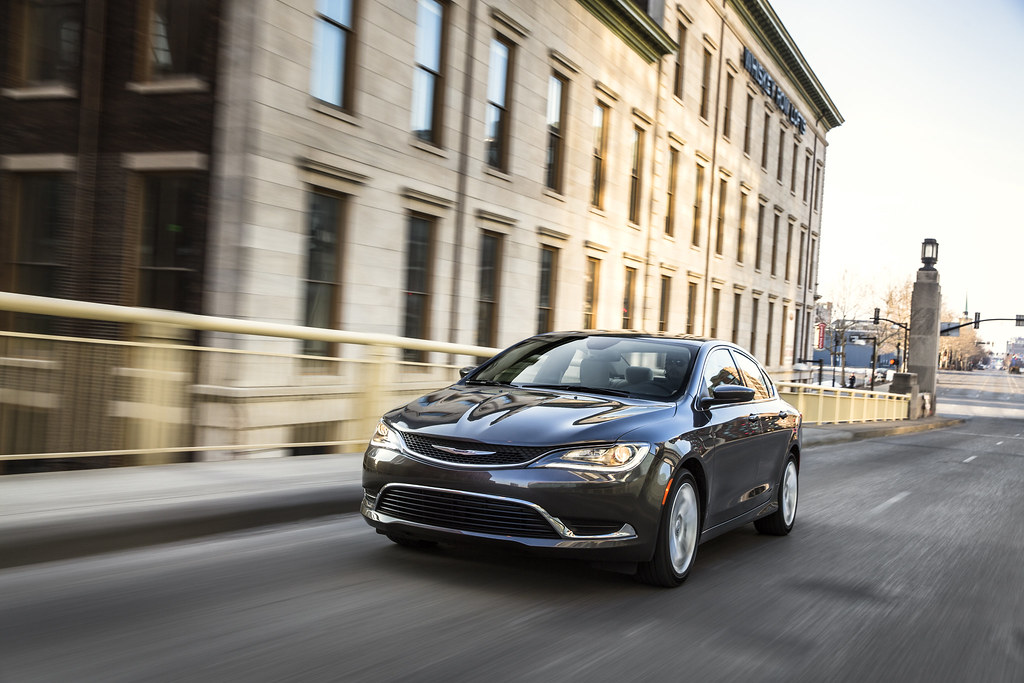
7. **Chrysler 200**The Chrysler 200, a sedan produced between 2011 and 2017, promised a refreshed entry into the mid-size market, but for many buyers, it delivered a frustrating ownership experience instead. This model has frequently been cited for its pervasive reliability issues, particularly affecting its later model years. Those who purchased the 2015, 2016, and 2017 iterations often found themselves facing significant mechanical headaches, quickly leading to a sense of regret.
A central point of contention for these model years was the nine-speed automatic transmission. Owners reported this transmission to be “especially problematic,” struggling with inconsistent performance and, in many unfortunate cases, outright failure. A faulty transmission is more than just an inconvenience; it can be a costly and critical repair that dramatically impacts a vehicle’s usability and an owner’s peace of mind.
Beyond the well-documented transmission woes, the Chrysler 200 also suffered from “engine performance problems.” This meant that even when the transmission was cooperating, the vehicle often failed to provide the power and responsiveness expected from a modern sedan. The combination of these core mechanical issues fundamentally undermined the ownership experience, leaving many drivers wishing they had explored other options before committing to this particular model.
For consumers evaluating used cars, the Chrysler 200 serves as a powerful reminder to thoroughly investigate specific model year reliability, especially regarding major components like the powertrain. What might appear as an attractive deal on the surface can quickly turn into a financial burden when recurring mechanical faults become a regular part of the ownership journey.
Car Model Information: 2015 Chrysler 200 S
Name: Chrysler 200
Manufacturer: Chrysler
Production: 2010–2016
ModelYears: 2011–2017
Assembly: Sterling Heights, Michigan
Class: Mid-size car
Sp: us
Predecessor: Chrysler Sebring
Categories: 2010s cars, All articles with dead external links, All articles with unsourced statements, Articles with dead external links from July 2020, Articles with permanently dead external links
Summary: The Chrysler 200 is a mid-size sedan that was manufactured and marketed by Chrysler from model years 2011 to 2017 across two generations in four-door sedan and two-door convertible (first generation only) body styles.
The 200 nameplate debuted on the 200C, a prototype hybrid vehicle shown at the 2009 North American International Auto Show in Detroit and based on the Chrysler 300. The 200C concept was engineered to accept either traditional gasoline, hybrid or full-electric powertrains.
Get more information about: Chrysler 200
Buying a high-performing used car >>>
Brand: Chrysler Model: 200
Price: $7,200 Mileage: 122,275 mi.
Read more about: 14 Classic Rides That Boomers Loved But Millennials and Gen Z Just Can’t Stand: Unpacking Why These Iconic Cars Fail to Appeal Now
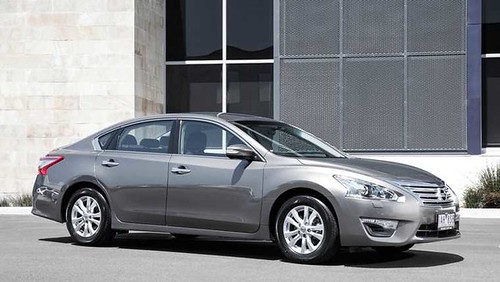
8. **Nissan Altima**The Nissan Altima has long been a staple in the mid-size sedan segment, known for its practicality and fuel efficiency. However, for a significant number of owners, particularly those who opted for models from 2013 to 2019, the Altima has become a source of profound buyer’s remorse. This period marks when the vehicle’s reputation for reliability took a substantial hit, primarily due to one notorious component.
At the heart of the Altima’s problems during these years was its continuously variable transmission (CVT). Described as a “problematic transmission,” the CVT in these models frequently exhibited a range of issues that severely impacted the driving experience and the vehicle’s long-term dependability. Owners often reported not just minor nuisances but significant functional flaws.
The transmission’s “worst issues raising their ugly heads” during this period included inconsistent acceleration, unusual noises, and in many cases, complete failure, necessitating expensive replacement. A car’s transmission is its lifeblood, and when it’s unreliable, the entire ownership proposition becomes compromised. This widespread dissatisfaction with the CVT alone was enough to make many owners question their purchase.
But the Altima’s troubles weren’t confined solely to the transmission. Owners also cited concerns with the vehicle’s “steering,” indicating a lack of precision or responsiveness that diminished driving confidence. Furthermore, issues like “excessive oil consumption” and “oil leaks” pointed to deeper engine reliability problems, adding to the ongoing maintenance burden and expense for frustrated drivers. The accumulation of these diverse problems makes it clear why so many Altima owners from these years express a strong desire to “unopt for” their purchase.
Car Model Information: 2023 Nissan Altima SR FWD
Name: Nissan Altima
Caption: 2024 Nissan Altima SR (L34; US)
Manufacturer: Nissan
Aka: Nissan Bluebird
Production: 1992–present
Class: Compact car
Predecessor: Nissan Bluebird,Nissan Stanza
ModelYears: 1993–present
Categories: 2000s cars, 2010s cars, 2020s cars, All-wheel-drive vehicles, All Wikipedia articles written in American English
Summary: The Nissan Altima is a mid-size car manufactured by Nissan since 1992. It is a continuation of the Nissan Bluebird line, which began in 1955.
The Altima has historically been larger, more powerful, and more luxurious than the Nissan Sentra but less so than the Nissan Maxima. The first through fourth-generation cars were manufactured exclusively in the United States and officially sold in North and South America, along with the Middle East and Australia. For other markets, Nissan sold a related mid-size sedan called the Nissan Teana which was between the Altima and Maxima in terms of size. In 2013, the Teana became a rebadged version of the fifth-generation Altima.
The name “Altima” was originally applied to a top trim line of the Nissan Leopard for the Japanese market in 1986, and then to the Nissan Laurel Altima mid-size car sold in Central America and the Caribbean before 1992. In 1992, Nissan discontinued the Stanza which was a Nissan Bluebird clone, replacing it with the US-built Altima, while remaining a compact car. The first Altima was produced in June 1992, as a 1993 model. All Altima models for the North American market were built in Smyrna, Tennessee, until June 2004, when Nissan’s Canton, Mississippi plant also began producing the model to meet high demand.
Get more information about: Nissan Altima
Buying a high-performing used car >>>
Brand: Nissan Model: Altima
Price: $20,500 Mileage: 33,732 mi.
Read more about: Buyer’s Remorse on Wheels: 9 Vehicles Owners Wish They Never Drove Off the Lot
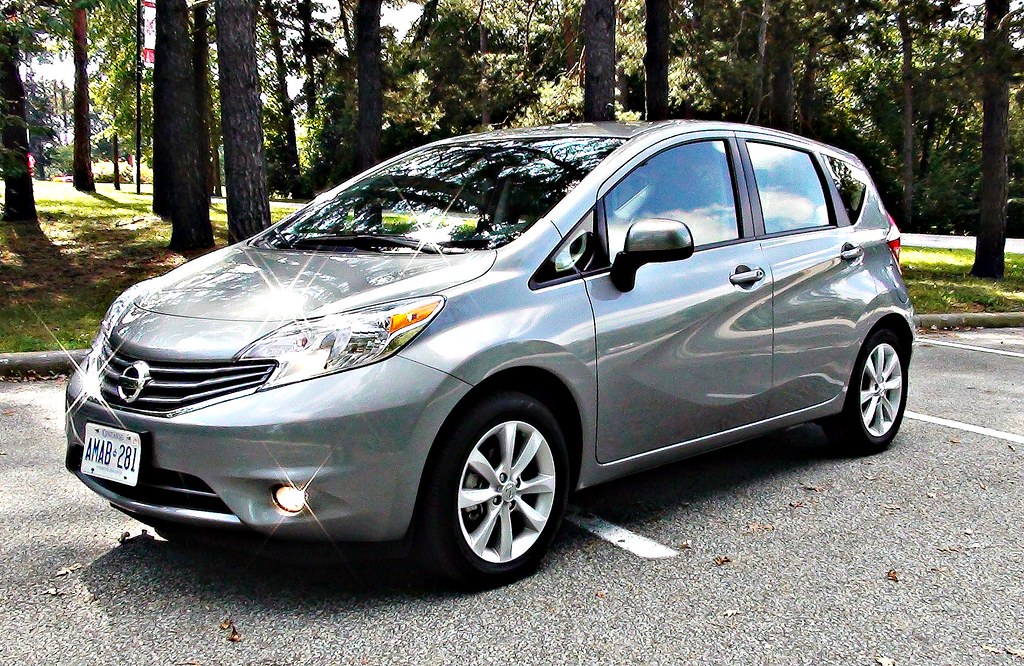
9. **Nissan Versa Note**Marketed as a compact and affordable hatchback, the Nissan Versa Note often attracted buyers with its appealingly low price point. However, as many owners soon discovered, that “low price mirrors the quality level,” leading to a quick realization that the initial savings were often overshadowed by a frustrating ownership experience. This vehicle illustrates how a budget-friendly option can sometimes come with a hidden cost in terms of reliability and performance.
Similar to other Nissan models of its era, the Versa Note’s continuously variable transmission (CVT) proved to be a major source of grievance. This transmission “frustrated Nissan Versa Note owners to no end,” impacting the vehicle’s driveability and long-term durability. Issues with CVTs in these models often include hesitations, rough operation, and eventual costly failures, diminishing the smooth driving experience that should be expected from a modern car.
Compounding the transmission problems was the vehicle’s overall engine performance. The “anemic acceleration from the 1.6-liter 4-cylinder engine” meant that the Versa Note often struggled to keep up in various driving conditions, making highway merging or spirited driving a challenging endeavor. This lack of power, combined with the problematic CVT, resulted in a driving experience that was far from enjoyable for many.
Ultimately, while the Nissan Versa Note offered an accessible entry into vehicle ownership, the persistent mechanical issues, particularly with its powertrain, quickly eroded any perceived value. Owners who sought a dependable and inexpensive means of transport often found themselves contending with unexpected repairs and a disappointing performance, making it a frequent candidate for buyer’s remorse.
Car Model Information: 2019 Cadillac Escalade Platinum
Categories: All set index articles, Articles with short description, CS1 Mexican Spanish-language sources (es-mx), CS1 Portuguese-language sources (pt), CS1 Spanish-language sources (es)
Summary: Nissan Versa is an automobile nameplate used by the Japanese manufacturer Nissan in the Americas for the following models:
According to a Nissan press release in 2008, “versa” is short for “versatile space” meant to imply the spaciousness of the interior and configurable cargo arrangements. The Versa is one of the few remaining subcompact cars left on sale in the North American market, with most automakers dropping small cars from their lineups to focus on crossovers and SUVs.
Get more information about: Nissan Versa
Buying a high-performing used car >>>
Brand: Nissan Model: Versa Note
Price: $37,811 Mileage: 84,091 mi.
Read more about: Beyond the Screen: Uncovering the Fates of the Most Iconic TV and Movie Cars Ever
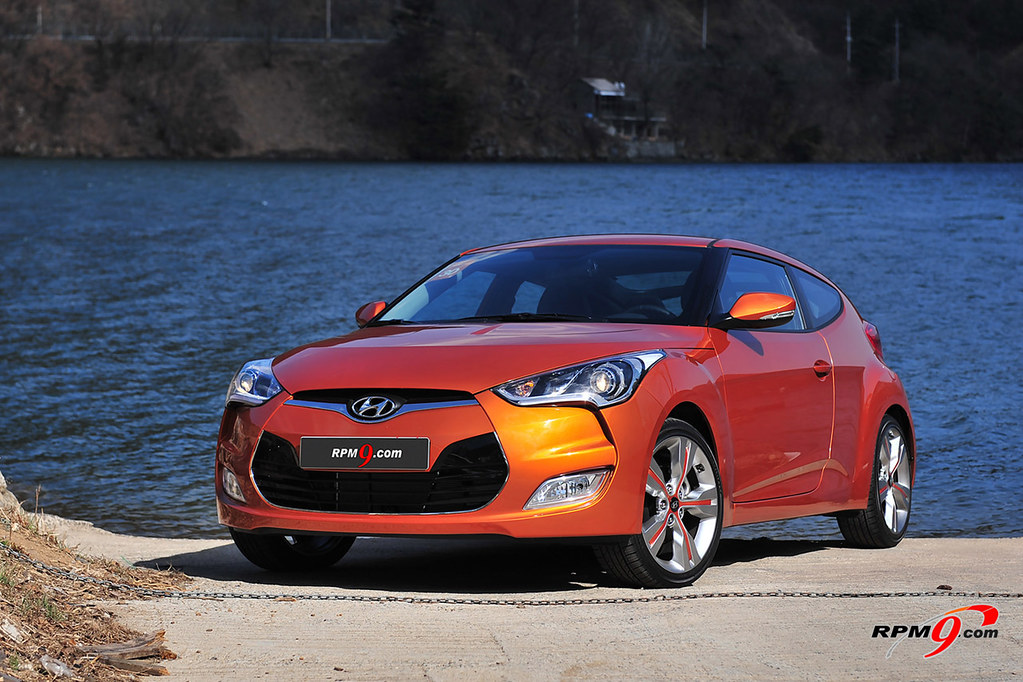
10. **Hyundai Veloster**The Hyundai Veloster, with its distinctive three-door layout and sporty styling, certainly stood out from the crowd, promising a fun and engaging driving experience. Its responsive handling further enhanced its initial appeal. Yet, for all its cool aesthetics and dynamic aspirations, the “problems are hard to ignore” for a significant number of owners who found themselves regretting their purchase decisions.
Central to the Veloster’s owner dissatisfaction were its engine issues, which could tragically “lead to catastrophic failure.” Such a severe problem represents not just a major financial drain but also a significant safety concern, completely undermining the trust an owner places in their vehicle. This potential for engine breakdown cast a long shadow over an otherwise distinctive car.
Adding to the mechanical woes, the Veloster’s dual-clutch transmission also presented its share of frustrations. Owners reported issues such as “delayed acceleration, slipping, and jerky shifts,” which collectively made for an inconsistent and often unpleasant driving experience. These transmission glitches detracted significantly from the ‘responsive handling’ that was supposed to be a key selling point of the vehicle.
As if a problematic engine and transmission weren’t enough, the Hyundai Veloster also contended with “suspension and steering problems.” These additional issues further chipped away at the vehicle’s supposed sporty credentials and overall reliability. For a car that aimed to be a fresh and exciting option, its accumulated mechanical flaws turned it into a source of considerable regret for many of its enthusiastic buyers.
Car Model Information: 2012 Hyundai Veloster Base
Name: Hyundai Veloster
Manufacturer: Hyundai Motor Company
Production: 2011–2022
Class: Sport compact car
Layout: Front-engine, front-wheel-drive layout
BodyStyle: hatchback
Predecessor: Hyundai Tiburon
ModelYears: 2012–2022
Assembly: Ulsan
Categories: All Wikipedia articles in need of updating, All articles with unsourced statements, Articles containing Korean-language text, Articles with short description, Articles with unsourced statements from May 2018
Summary: The Hyundai Veloster (Korean: 현대 벨로스터, romanized: Hyeondae Belloseuteo) is a compact car first produced in 2011 by Hyundai, with sales beginning in South Korea on March 10, 2011, and in Canada and the United States since the fall of 2011. In South Korea, it was marketed under Hyundai’s ‘Premium Youth Lab’. It was unveiled on January 10, 2011, at the Detroit Auto Show, and fills the void left when Hyundai discontinued the Hyundai Tiburon after the 2008 model year.
The car differs from most other hatchbacks with its asymmetrical door configuration, featuring one large door on the driver side and two smaller doors on the passenger side. This configuration is more common on commercial vehicles and minivans.
Get more information about: Hyundai Veloster
Buying a high-performing used car >>>
Brand: Hyundai Model: Veloster
Price: $7,950 Mileage: 83,462 mi.
Read more about: Is Your Ride a Ticking Time Bomb? 14 Popular Cars That Can Seriously Let You Down After 100K Miles
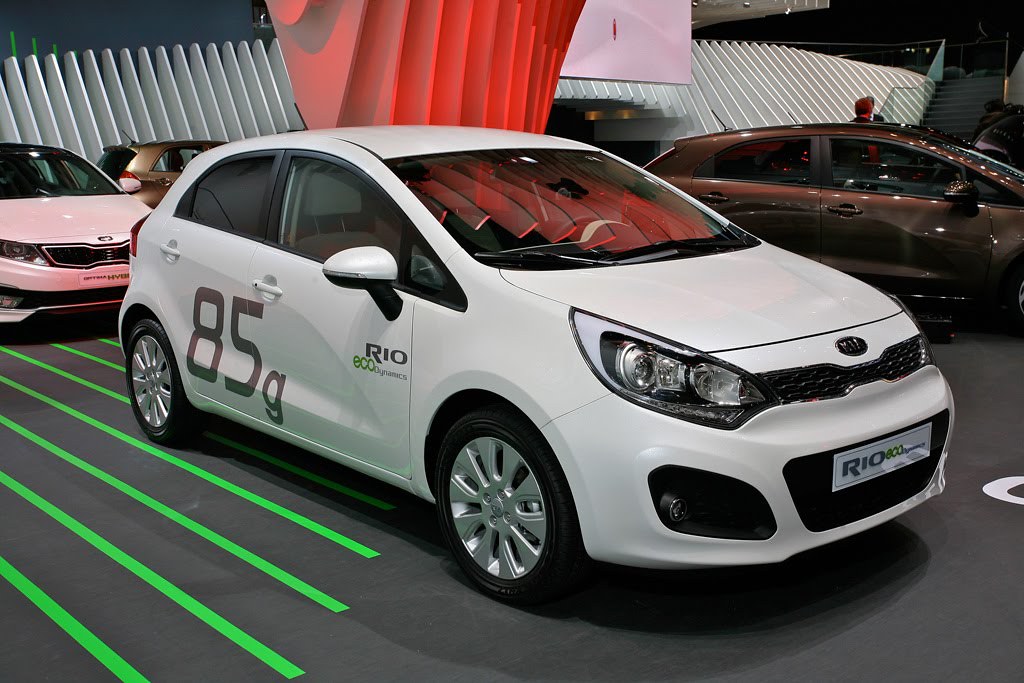
11. **Kia Rio**The Kia Rio often attracts buyers looking for an economical and efficient subcompact car, and it has certainly gained a reputation for affordability. However, despite these attractive qualities, a notable segment of its owners has experienced their “fair share of buyer’s remorse,” discovering that beneath the surface of cost-effectiveness lie persistent issues that diminish the ownership experience. This balance of affordability versus long-term satisfaction is a critical consideration for car buyers.
One of the primary concerns frequently cited by Rio owners revolves around “engine issues.” These problems manifest in various forms, most commonly reported as “rough idling and misfires.” Such symptoms can be not only annoying but also indicative of underlying mechanical trouble, often stemming from critical components like the “spark plugs or ignition coils.” Addressing these engine faults can lead to unexpected repair costs, negating the initial savings of a cheaper purchase.
Beyond the mechanical heart of the vehicle, the Kia Rio also draws criticism for its interior. Owners often “complain about the cheap interior quality and comfort issues.” While a budget car is not expected to rival luxury vehicles, a lack of basic comfort and durable materials can quickly lead to daily dissatisfaction, especially during longer commutes or road trips. This impacts the overall perceived value and enjoyment of the car.
Ultimately, for those who purchased a Kia Rio, the initial allure of its low price and good fuel economy often gives way to frustration over reliability concerns and a less-than-premium cabin experience. While it offers a low barrier to entry for car ownership, the recurring issues contribute to a common sentiment among owners: a wish for a different, more dependable vehicle if given the chance for a do-over.
Car Model Information: 2023 Kia Rio S
Name: Kia Rio
Caption: Fourth generation Kia Rio
Manufacturer: Kia
Aka: Kia Pride (2005–2017),Kia K2 (China; 2011–2020)
Production: November 1999 – December 2023
ModelYears: 2001–2023 (North America)
BodyStyle: hatchback
Class: Subcompact car
Layout: Front-engine, front-wheel-drive layout
Predecessor: Kia Pride,Kia Avella
Successor: Kia K3 (BL7)
Categories: 2000s cars, 2010s cars, Articles containing Korean-language text, Articles with short description, CS1 Croatian-language sources (hr)
Summary: The Kia Rio (Korean: 기아 리오) is a subcompact car manufactured by Kia from 1999 to 2023. Body styles have included a three and five-door hatchback and four-door sedan, equipped with inline-four gasoline and diesel engines, and front-wheel drive.
The Rio replaced the first generation Pride—a rebadged version of the Ford Festiva—and the Avella, a subcompact sold as a Ford in some markets. A second generation was introduced in 2005 in Europe and in 2006 in North America, sharing its platform with the Hyundai Accent, a subcompact manufactured by its sister Hyundai Motor Company in South Korea.
In August 2023, the K3 was introduced as its successor in several markets such as Mexico and the GCC countries.
Get more information about: Kia Rio
Buying a high-performing used car >>>
Brand: Kia Model: Rio
Price: $17,218 Mileage: 22,509 mi.
Read more about: From Humble Beginnings to Electric Dreams: A Deep Dive into Elon Musk’s Electrifying and Eclectic Garage
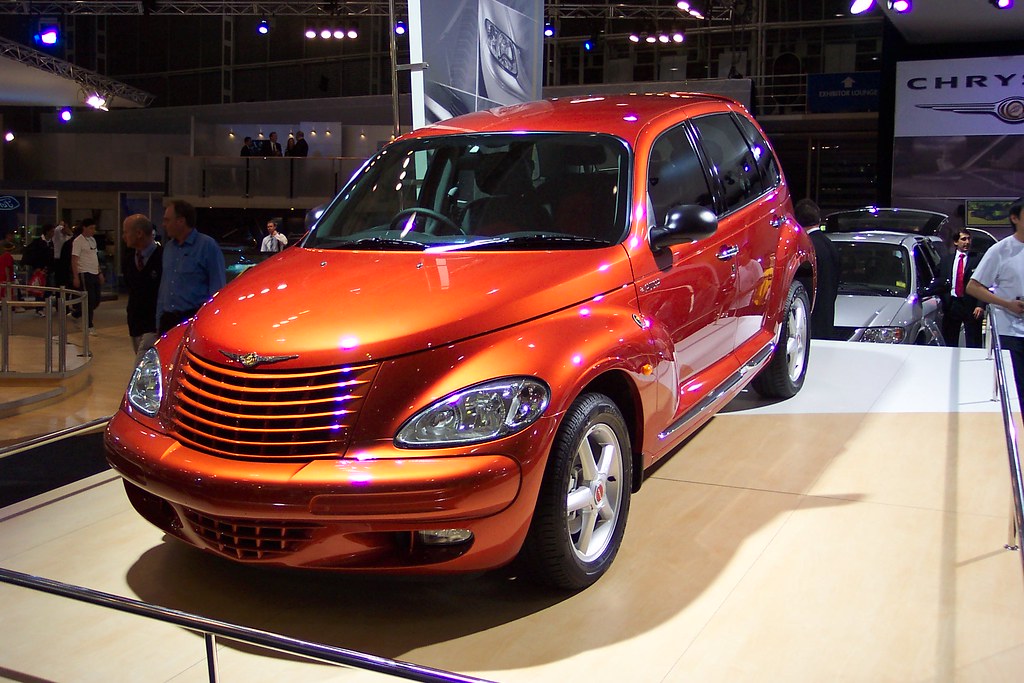
12. **Chrysler PT Cruiser**The Chrysler PT Cruiser arrived on the scene with a distinctive retro-inspired design that instantly divided opinions; people either “love or hate” its unique aesthetic. Yet, as many owners would attest, the vehicle’s looks were far from the only aspect causing consternation. Beneath its polarizing exterior lay a multitude of mechanical issues that led to widespread regret among those who bought into its nostalgic charm.
Perhaps the most significant source of dissatisfaction stemmed from the PT Cruiser’s extensive “engine issues galore.” Owners reported a litany of problems, including “stalling, rough idling, overheating, and head gasket failure.” These are not minor inconveniences but serious, often costly, defects that can severely impact the vehicle’s reliability and longevity, making it a notoriously frustrating car to maintain.
As if the engine problems weren’t enough, the PT Cruiser also suffered from persistent “transmission and electrical problems, among other things.” Transmission failures or inconsistent shifting are major concerns for any vehicle, while electrical gremlins can lead to unpredictable malfunctions, from dashboard warnings to power accessory failures. The accumulation of these diverse and critical faults created an overwhelming ownership burden.
For many, the initial novelty of the PT Cruiser’s styling quickly faded in the face of these chronic mechanical and electrical woes. The constant need for repairs and the associated expenses transformed what might have been an interesting automotive choice into a deeply regretted decision. It serves as a stark reminder that unique style alone cannot compensate for fundamental reliability shortcomings.
### The Road Ahead: Learning from Regret to Drive Smarter
As we’ve explored the experiences of owners who wish they could “unopt for” their vehicle choices, a clear theme emerges: the importance of looking beyond the initial sparkle. Whether it’s the allure of a low price, the prestige of a brand, or the promise of innovative technology, every vehicle comes with a real-world ownership journey. These stories serve as invaluable lessons, illuminating the potential pitfalls that can transform an exciting purchase into a source of ongoing frustration and significant financial burden.
The widespread regret, particularly among newer car buyers, underscored by surveys revealing that nearly 4 in 10 have second thoughts, demonstrates that no one is immune to making a less-than-ideal choice. The leading cause of this remorse isn’t about the color or the payment, but fundamentally about the make and model itself. This highlights that thorough research into long-term reliability, common complaints, and ownership costs—rather than just initial impressions—is paramount.
Car Model Information: 2019 Cadillac Escalade Platinum
Name: Chrysler PT Cruiser
Manufacturer: Chrysler
ModelCode: PT,PG
Production: 2000–2010
ModelYears: 2001–2010
Assembly: Toluca, Mexico State
Designer: Bryan Nesbitt
Class: Compact car
BodyStyle: convertible
Platform: Chrysler PT platform
Related: Dodge SRT4,Dodge Neon
Predecessor: Dodge Neon
Successor: Lancia Delta#Third generation
Layout: Front-engine, front-wheel-drive layout
Engine: ubl
Transmission: Ultradrive#40TE
Wheelbase: 103 in
Abbr: on
Length: 168.8 in
Width: 67.1 in
Height: 63 in
Weight: 3123 lb
Categories: 2010s cars, All articles with unsourced statements, Articles with short description, Articles with unsourced statements from March 2018, Cars discontinued in 2010
Summary: The Chrysler PT Cruiser is a compact car that was built by the American company Chrysler from 2001 until 2010. Introduced as a five-door hatchback wagon, a two-door convertible variant was also made from 2005 until 2008.
Originally planned as a Plymouth model, the PT Cruiser was ultimately marketed as a Chrysler when Plymouth was discontinued. Intended to invoke 1930s aesthetics, the exterior of the PT Cruiser was designed by Bryan Nesbitt. The model received an intermediate facelift for the 2006 model year. Interior packaging was noted for its high roof, high h-point seating, and flexible cargo and passenger configurations enabled by a multi-level rear cargo shelf and rear seats a user could fold, tumble, or remove.
The PT Cruiser was produced in Mexico and Austria at the Toluca Car Assembly and Eurostar Automobilwerk factories respectively. By the end of production in July 2010, worldwide production had reached 1.35 million.
In its nameplate, PT stands for “Personal Transport” or “Personal Transportation”. PT was the PT Cruiser’s product code for the Mexican-made units.
Get more information about: Chrysler PT Cruiser
Buying a high-performing used car >>>
Brand: Chrysler Model: PT Cruiser
Price: $37,811 Mileage: 84,091 mi.
Read more about: 14 Classic Rides That Boomers Loved But Millennials and Gen Z Just Can’t Stand: Unpacking Why These Iconic Cars Fail to Appeal Now
Ultimately, a car is more than just transportation; it’s a major investment and a daily companion. Learning from the collective wisdom, and missteps, of others empowers you to navigate the complex automotive market with greater confidence. By understanding the common reliability woes, design flaws, and unexpected costs associated with certain models, you can make a decision that you’ll be happy to live with for years to come, avoiding your own case of buyer’s remorse and driving off into a more satisfying automotive future.

